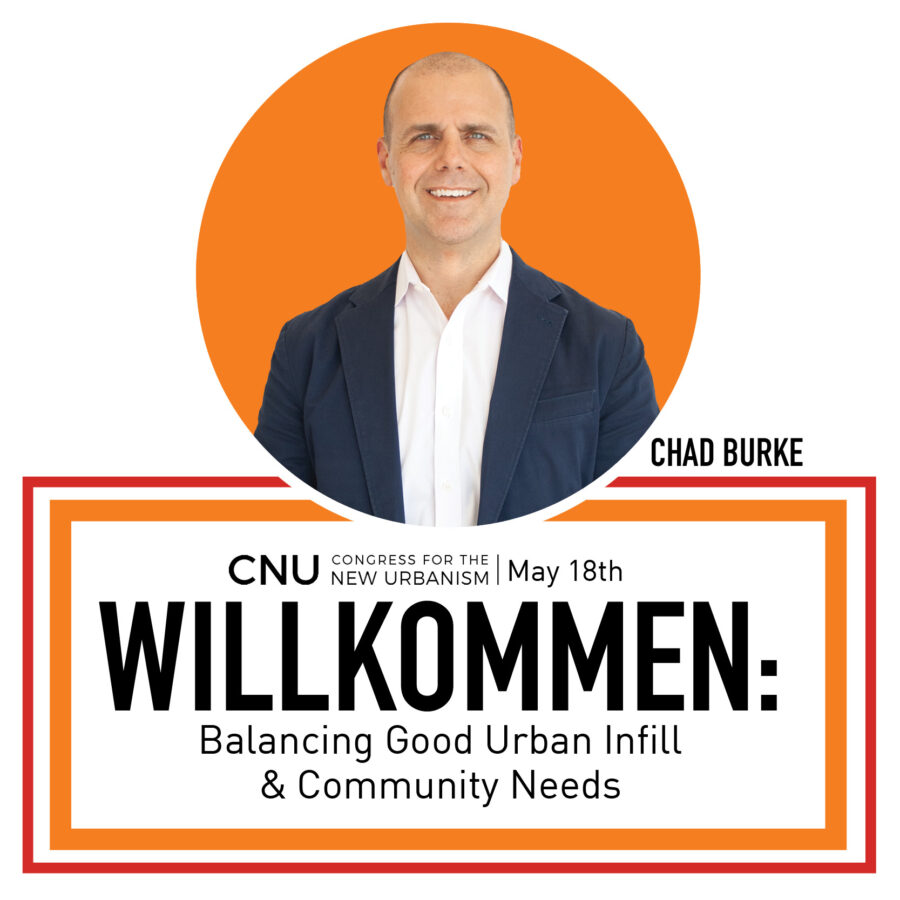Insights
Jul 22, 2024 _ insights
Willkommen: Balancing Good Urban Infill and Community Needs
Dedicated to “building places people love,” for over thirty years, the Congress for the New Urbanism (CNU) has advanced the goal of reinvesting in urban centers to build diverse, sustainable, and walkable neighborhoods.
Embodied in the idea of “restorative urbanism,” this commitment is not to an idealized past but to a more sustainable future that addresses past inequities. But what is restorative urbanism? And what does it look like?
At CNU’s annual conference, held this year in Cincinnati, I joined the development team for Willkommen—a mixed-use, mixed-income project that has brought the largest addition of affordable housing to Cincinnati’s urban core in decades—to describe how that project realizes this idea. A few key themes came out in our presentation including:
- Collaboration + Community Engagement. Located in Cincinnati’s historic, Over-the-Rhine neighborhood, the project was shaped by a myriad of sometimes contradictory influences: historic infill guidelines, requirements associated with various kinds of tax credits, zoning requirements, community needs, and more. It involved 14 community-focused meetings and board meetings. This didn’t make the project any easier, but it did improve the result, created community support, and shaped the policy environment for future development.
- Repairing the Historic Fabric. Involving 16 historic and four infill buildings, the project not only improved numerous affordable but distressed housing units, but it also added several dozen affordable and market rate units. At the same time, the infill buildings mended holes in the urban fabric that that had been created through disinvestment, replacing parking lots by beautiful, context-responsive buildings.
- Contextual Design. Focusing more specifically on the three infill buildings that GBBN did, we described how each building contributes to the lives of its residents and neighbors by making key design moves. The undulating brick wall at Willkommen on Vine, for instance, enters into dialogue with the historic oriels of its neighbors while providing improved light and privacy for its residents; the building on Republic uses views and stoops to build community; and the building on Pleasant negotiates differently scaled streets to avoid overwhelming its neighbors. In each case, the design responds to the opportunities of its site to deliver on the promise of great design for all.
By showing what is possible when we knit together the larger historic, social, economic, and physical context via modern building techniques, Willkommen’s new buildings help the community embrace a YIMBY—Yes In My Backyard—attitude to density, affordability, and design equity.
To learn more, see our presentation. Learn more about CNU.
Learn more about Willkommen here or read about its CNU Charter Award.
 Chad Burke AIA, LEED AP is a principal and the Mixed-use market director at GBBN. Overseeing the firm’s commercial, multi-family residential, non-profit and workplace projects, Chad works closely with developers and workplace clients to design solutions that meet their short-term and long-term needs. His work includes Willkommen, City Club Apartments at Union Central, the Foundry, and more.
Chad Burke AIA, LEED AP is a principal and the Mixed-use market director at GBBN. Overseeing the firm’s commercial, multi-family residential, non-profit and workplace projects, Chad works closely with developers and workplace clients to design solutions that meet their short-term and long-term needs. His work includes Willkommen, City Club Apartments at Union Central, the Foundry, and more.




